
A new opera explores Islam’s largely unsung role in the history of enslaved Africans in America as it expands cultural and spiritual understanding.
Rhiannon Giddens had never heard of Omar ibn Said until Nigel Redden, then the general director of Spoleto Festival USA, approached her about writing an opera based on an enslaved Muslim man who had lived in North Carolina.
The Grammy Award-winning musician was curious, and also slightly angry. Growing up in North Carolina, this was not part of the history she was taught, Giddens told a Charleston, South Carolina, audience at the festival this past spring.
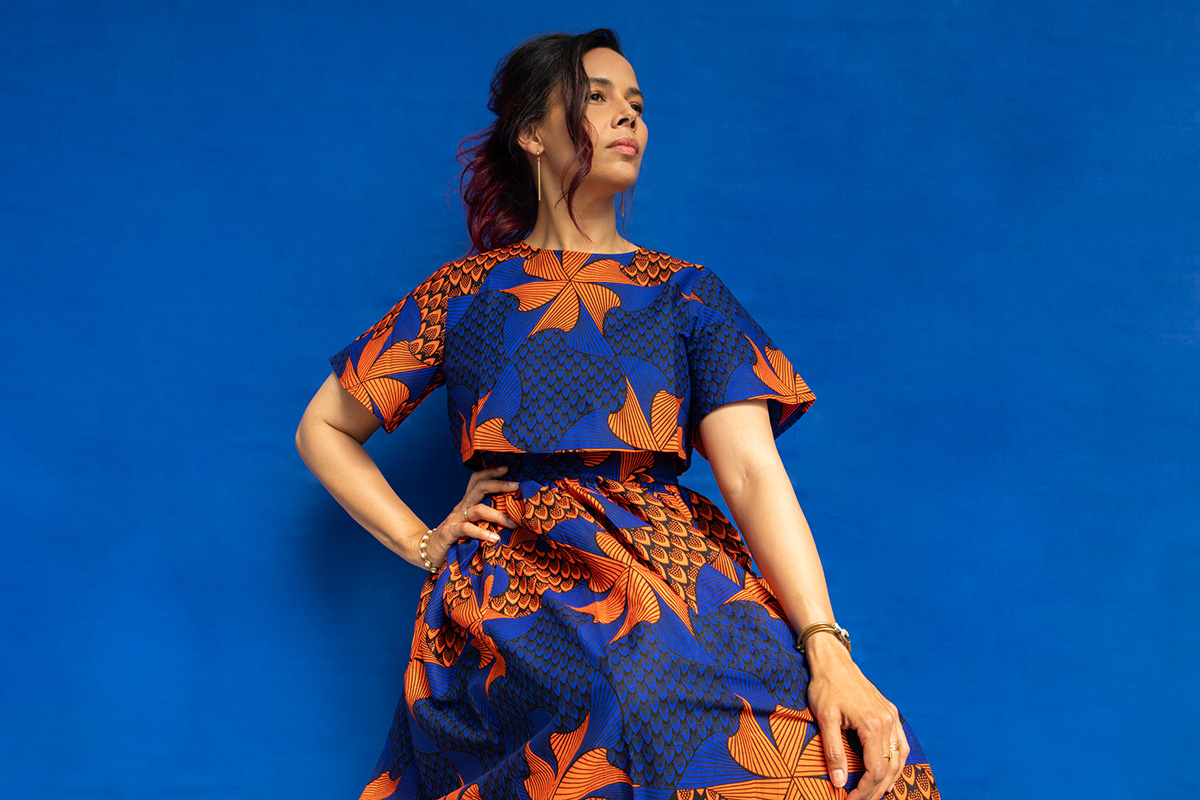

Said was not included in history textbooks, or even in libraries, until the Library of Congress acquired his autobiography in 2017. The 15-page manuscript, penned nearly 200 years ago when Said was 61, is the only known surviving autobiography written in Arabic by an enslaved person in America. After several translations into English, the original manuscript lay forgotten for nearly a century in a dusty trunk in Virginia. Its recent rediscovery has sparked interest among academics — and creativity onstage.
The emergence of this man’s autobiography comes in a fraught season of reckoning over whose stories have been told and whose have been ignored in the narration of American history. At the same time, while some American Christians have begun to more fully acknowledge the faith’s role in racial oppression, others have come to more fully embrace a nationalist vision rooted in division and racism.
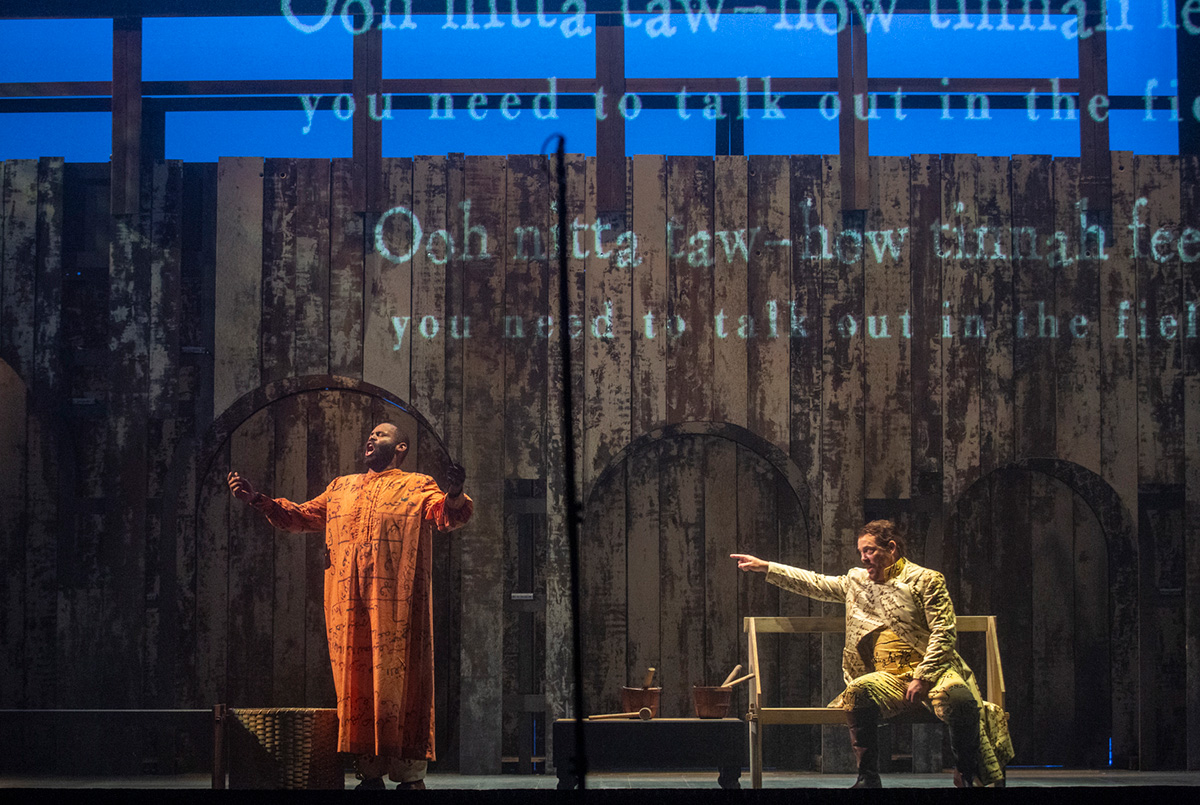
The opera “Omar,” which premiered at Spoleto this past May, offers a window into the defining role Said’s faith played in his extraordinary life, undergirded by his own telling.
For Giddens, the invitation from Redden to bring the story to the stage was a welcome challenge. The multi-instrumentalist and classically trained opera singer is known for her genre-crossing talent — an Americana-roots-country-folk-classical mashup, plus a voice that knows no bounds and an intellect to match — all fueled by her passion for recovering and celebrating African American musical history.
The MacArthur fellow and co-founder of the Carolina Chocolate Drops, who in 2020 was named artistic director of the Silkroad Ensemble (her predecessor was Yo-Yo Ma), has embraced the fretless banjo in recent years, an instrument with African roots and ties to the kora.
Giddens’ songwriting has delved deep into narratives of her enslaved ancestors, imagining their lives and stories in heart-wrenching tunes like “At the Purchaser’s Option” on her acclaimed album “Freedom Highway,” nominated for Album of the Year at the 2017 Americana Music Honors & Awards. As her website says, she uses her art “to excavate the past and reveal bold truths about our present.”
Whose stories are silenced in your community? How can you discover these stories?

So re-imagining Said’s life, especially for the operatic stage, and especially for a premier music and arts festival, was right up Giddens’ alley. “Opera,” she said, “is a format for big stories.”
Big is one thing, but Giddens knew a project of this magnitude required a creative partner, and Michael Abels, a composer best known for his scores for the Jordan Peele films “Get Out,” “Us” and, most recently, “Nope,” was the partner she wanted. Though the two had never met, much less worked together, Abels jumped at the opportunity.
“Our collaboration was immediate, from our very first meeting,” said Abels, who embellished Giddens’ libretto and initial melodies with his orchestration. He and Giddens set about researching just who Said was and why and how his long-buried story of spiritual journey, religious integrity and tenacity could make compelling opera.
This was all in early 2018, shortly after the Library of Congress digitized Said’s autobiography, which initially sparked Redden’s idea for the opera. The plan was for the new work to debut at the 2020 Spoleto Festival USA, coinciding with its host city’s 350th anniversary and the anticipated opening of the International African American Museum.
The pandemic, however, delayed the production for two years. In the meantime, as Giddens and Abels and their production team continued to collaborate virtually, George Floyd was murdered, and the world, already in the midst of one pandemic, was riveted by the racial reckoning and unrest of another.
It was as if the tattered, yellowing daguerreotype of Said — an elegant elder in a black suit, his hand resting regally on a cane, his heavy brow and haunting eyes staring straight at us — was imploring, “Here I am. Here we all are. Listen up.”
What stories have you uncovered that need to be told “big”? Who in your community has the talent and audience to tell big stories? What does collaboration with other storytellers look like in your community?
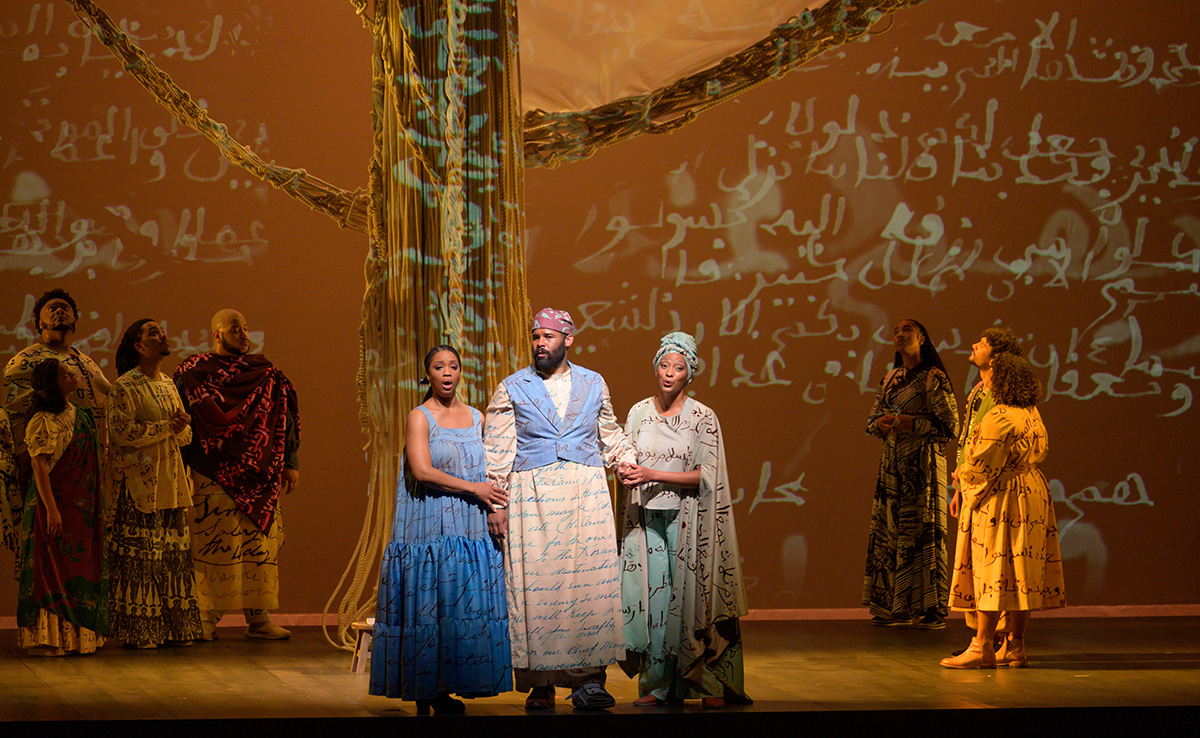
Who was Omar ibn Said?
While most people, like Giddens, had never heard of Said, Islamic scholar Hussein Rashid had.
Rashid, a Muslim American who earned a doctorate in Near Eastern studies from Harvard, has taught in higher education, including at Columbia University and Virginia Theological Seminary. He is a consultant on religious literacy and cultural competency, with a focus on Islam and popular culture.
“In the study of Islam in the United States, there are only a couple of early figures we have primary source documentation on, and one is Omar,” said Rashid, who provided historical and religious context to the opera’s creators.
What is known about the historical Said is slim, based on 15 or so texts, including letters and verses he inscribed, his autobiography, documents from the family who owned him in his later years, and other historical records.
“I wish to be seen in our land called Africa, in a place on the river,” Said wrote in a letter dated 1819. In his autobiography, he states that he was born in Futa Toro (now a part of French Senegal), “between the two rivers,” although the exact location remains unclear.
He learned Arabic from his uncle and was educated in Muslim schools, memorizing passages from the Quran. He was 37 when “infidels” attacked his village in 1807.
“A big army came, and they killed a lot of people,” he wrote. Said was sold to “a Christian man who bought me and walked me to the big ship in the big sea.”
After spending a month and a half at sea, a scene depicted in the opera by wrenching historical sketches of ship hulls stacked with human cargo, he arrived in Charleston at Gadsden’s Wharf — less than a mile from where his namesake opera would be staged. He was on one of the last slave ships to sail into the city before the trans-Atlantic slave trade was outlawed in 1808.
After his initial enslavement by a “wicked little man,” likely a rice plantation owner near Charleston, Said fled and escaped to Fayetteville, North Carolina. There he was caught and jailed.
Said used bits of charcoal to inscribe verses from the Quran on his cell walls. His exotic calligraphy, mysterious and untranslatable to the local white population, piqued the curiosity and interest of many, including the sheriff’s son-in-law, a wealthy planter named James Owen.
For the next two decades, Said lived and worked as a house servant for the Owen family.
“I continue in the hands of Jim Owen, who does not beat me, nor calls me bad names, nor subjects me to hunger, nakedness, or hard work,” his autobiography recounts.
Given his education, piety and position as an elder, Said was afforded special status. Owen, a devout Presbyterian, gave him an Arabic Bible and took him to church, where he was eventually baptized.
As the abolition movement gained traction and fears of slave uprisings spread, whites like Owen believed that successfully converting Africans to Christianity could justify slavery. When Said was given a tablet of cream-colored paper and asked to write his story, he understood the delicate line he was treading.
“I am Omar,” he wrote in his elegant script, opening his autobiography with lines from the Surah Al-Mulk.
“In the name of God, the merciful, the compassionate. May God bless our Lord Muhammad …” These, too, are the opening lyrics of “Omar,” which Abels set to the pulsing, resonant, drum-heavy rhythm of the earliest known African melody that enslaved people brought to America — “a very deliberate choice,” Abels said.
As the curtain rises, elaborate Arabic script dances across a translucent scrim. The text takes center stage, both in the scene design and in the opera’s breathtaking costumes. Said’s handwriting transforms from a series of written characters to a main character. It is given life.
Who are the students of the peoples that make up your community? What can you learn about the heroes of the people’s faith, families and homelands?
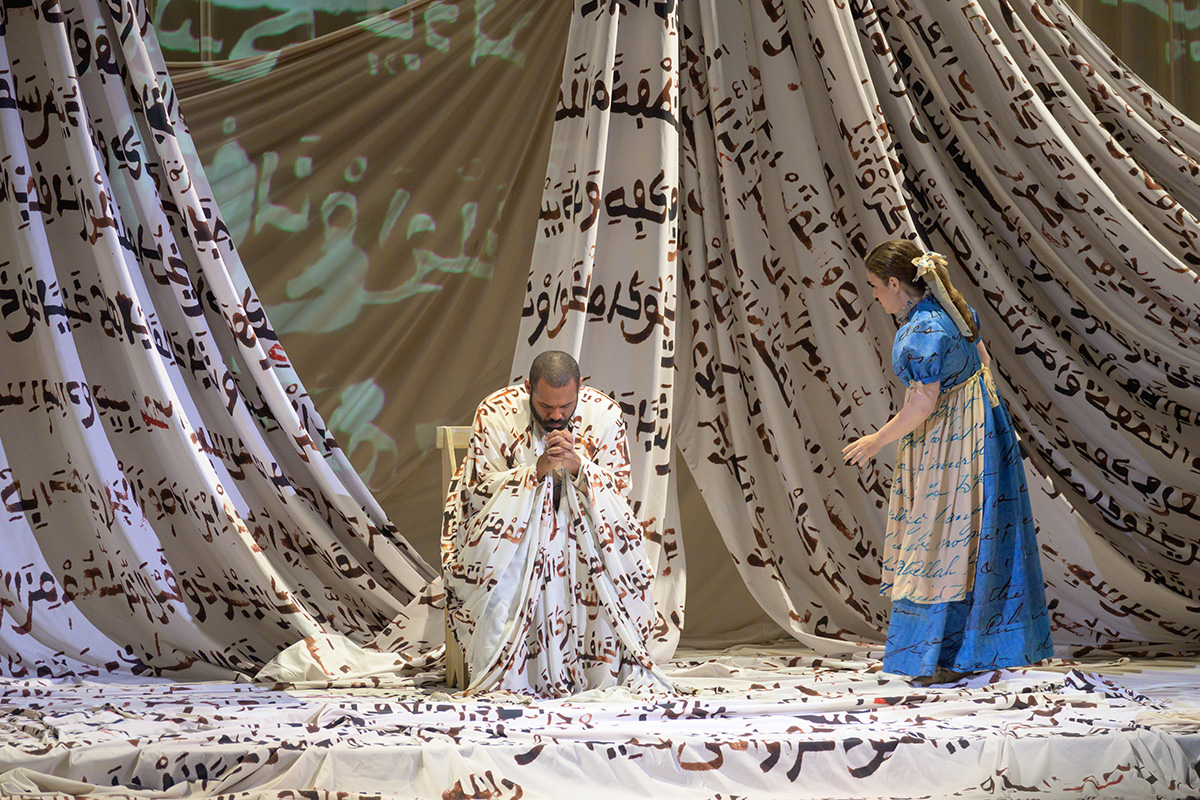
Richness of the religious landscape
To scholars like Rashid, who serves on the advisory board of the Doris Duke Foundation for Islamic Art, one of numerous funders of the opera, Said is historically significant “because figures like Omar help disabuse the notion that enslaved people were ignorant savages,” he said. “He challenges the mythos of the good of enslavement.”
Said’s life and faith also shed light on the high percentage of Muslims — estimated at 1 in 5 enslaved Africans — who were in the United States.
“Omar’s text also demonstrates the reality of religious fluidity,” Rashid said, noting that he quoted from both the Quran and the Psalms. “Yes, he’s praising Jesus, but no, that doesn’t mean Omar converted. Jesus is revered as an important prophet in Islam.”
Rather, his referencing Christianity points to Said’s intelligence and resilience. He understood that, despite his elevated status, he still wrote as a vulnerable captive; he needed to please his master.
“Said was protecting himself,” said Muhammad Fraser-Rahim, an assistant professor at The Citadel and, like Rashid, a consultant to the opera team.
Said embodies the fact that “American religion expresses itself in many ways,” Fraser-Rahim said. “This isn’t whirling dervish Sufism. Being a Muslim from Senegal is different from being Muslim in Tunisia.”
Basing an opera on Said’s life “challenges this idea of Islam as ‘other’ and Muslims as ‘hyperboogey man,’ as has been prevalent post-9/11; it shows that, in fact, Muslims have been here all along, and their legacy has helped shape this country,” Fraser-Rahim said.
“What Rhiannon did and what the opera has done is offer these wonderful glimpses of the richness of our religious landscape. It contributes to our imagination of what American religion can be.”
And for Giddens and Abels, for the cast and audiences, it expands the landscape of what opera can be.
How does the viewpoint of the privileged hide the identity of people in your community? What does it look like to make the invisible visible?
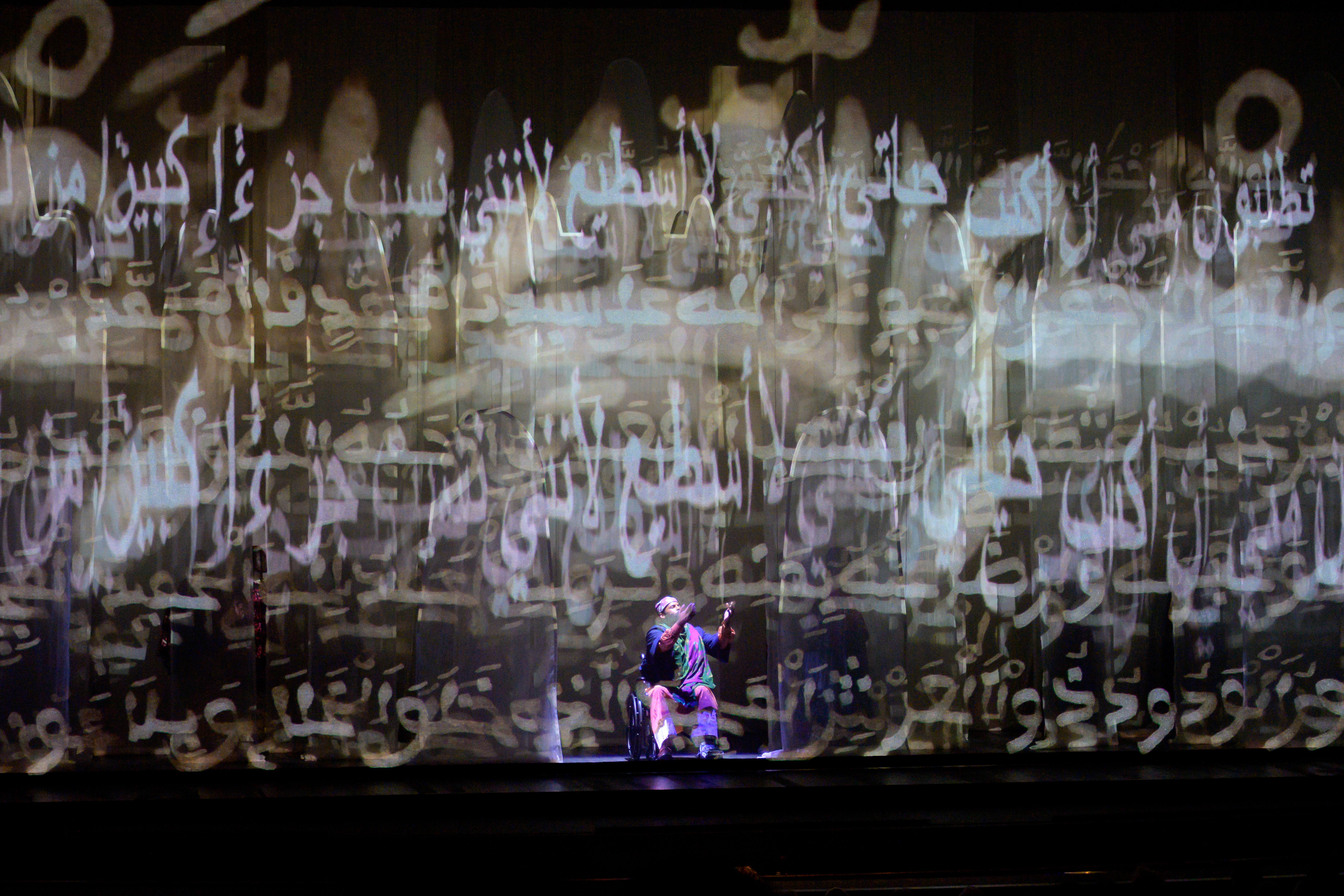
Music as spiritual practice
Imagining the real Said and his life, his suffering, his faith, his understanding of this new world in which he was violently thrust was “a very spiritual process,” Giddens said in a talk about creating the opera. “We can only try to evoke the spirit of Omar [through] what we have of his, passed down to us.”
Abels shares similar beliefs about the creative process.
“Writing music is a spiritual practice,” he said. “Music comes from a higher power, and the best music never feels like you’re writing it, just transcribing it, so I’m trying to get myself out of the way. My assignment is to bring it to the world.
“‘Omar’ was and is just a really good example of that, because of the subject matter. I can have that same experience in writing a film score, but for ‘Omar,’ it is ultimately a spiritual journey. That’s what the piece is about.”
Abels’ score weaves Western, more European orchestration when characters like Owen, the plantation owner, are singing with music that draws on slave melodies, spirituals, ragtime, early jazz and music that came from the Muslim diaspora.
“That added a kind of peace to it,” Abels said. “When Omar was praying and centered in his faith, the music conveys the sense of spiritual grounding he felt. As a non-Muslim but one who understands how faith provides solace and grounding, that’s where I was coming from.”
Abels recounted watching members of the audience during the second night’s performance, especially a number of people wearing head coverings and Muslim clothing. At the end of the opera, the chorus leaves the stage and, while chanting, processes into the aisles.
“Their chanting starts small and grows, then dies away very slowly, a centuries-old technique called a circular canon, like a round. Very meditative, by design,” Abels said. “The theatrical side of me loves ending a performance with a bang, but Rhiannon and I felt this was not the time to do that.”
As he watched these audience members, it appeared to Abels by their hand gestures that some were worshipping.
“That they would feel this was a spiritual place to them said everything,” Abels said.
“Omar” opens next at LA Opera, Oct. 22-Nov. 13, 2022, and then May 4-7, 2023, at Boston Lyric Opera. The opera is co-commissioned and co-produced by Spoleto Festival USA and Carolina Performing Arts at The University of North Carolina at Chapel Hill. Additional co-commissioners include LA Opera, Boston Lyric Opera, San Francisco Opera and Lyric Opera of Chicago.
What are the musical styles of your community? How do you listen to those styles, and what are you learning?
Questions to consider
- Whose stories are silenced in your community? How can you discover these stories?
- What stories have you uncovered that need to be told “big”? Who in your community has the talent and audience to tell big stories? What does collaboration with other storytellers look like in your community?
- Who are the students of the peoples that make up your community? What can you learn about the heroes of the people’s faith, families and homelands?
- How does the viewpoint of the privileged hide the identity of people in your community? What does it look like to make the invisible visible?
- What are the musical styles of your community? How do you listen to those styles, and what are you learning?
